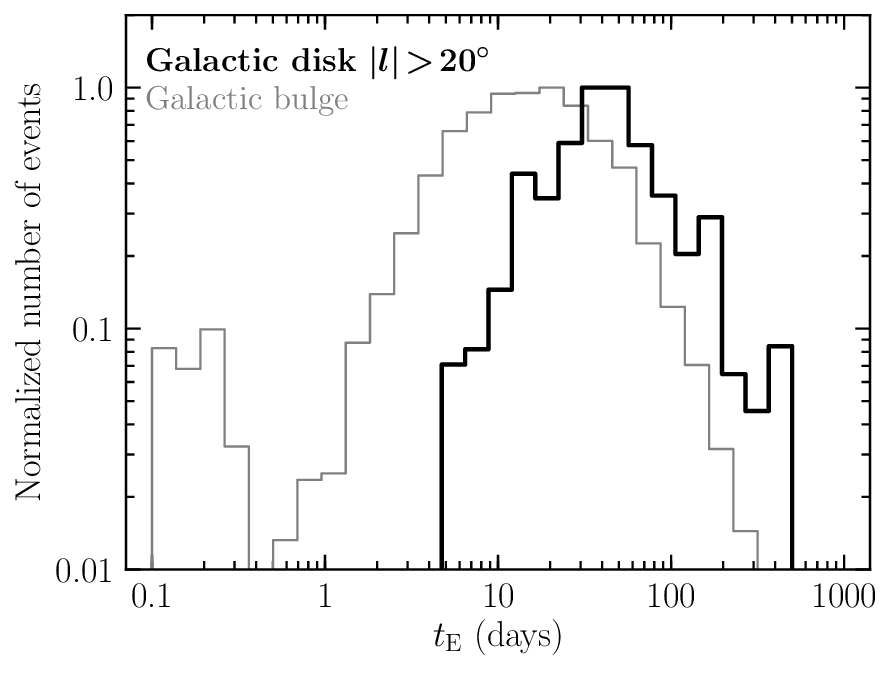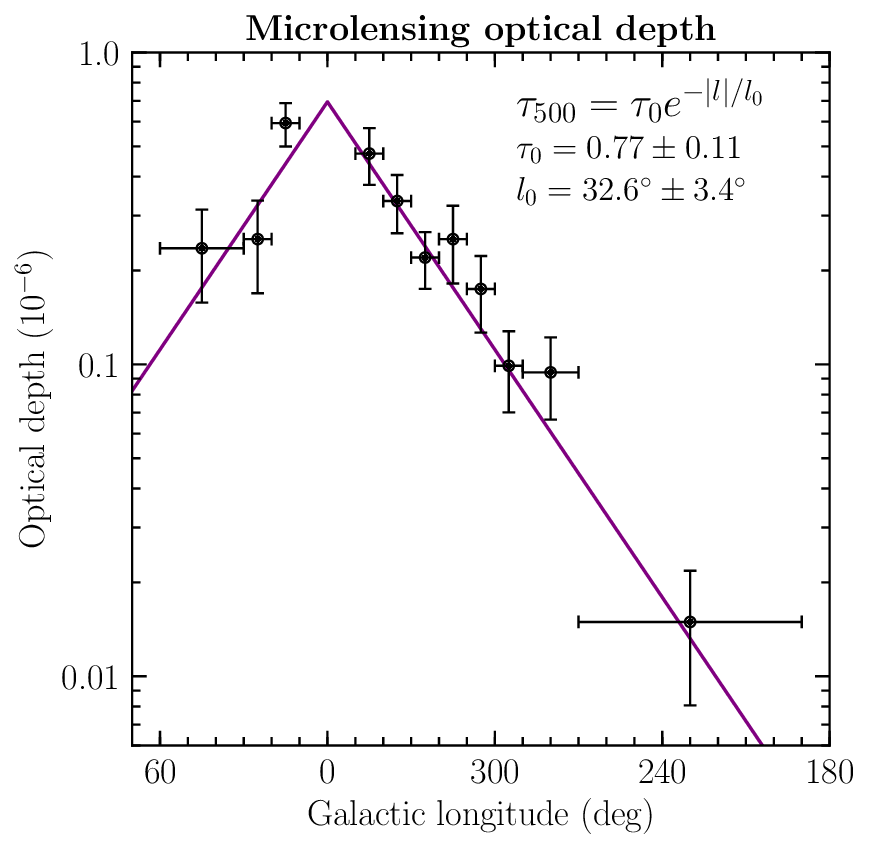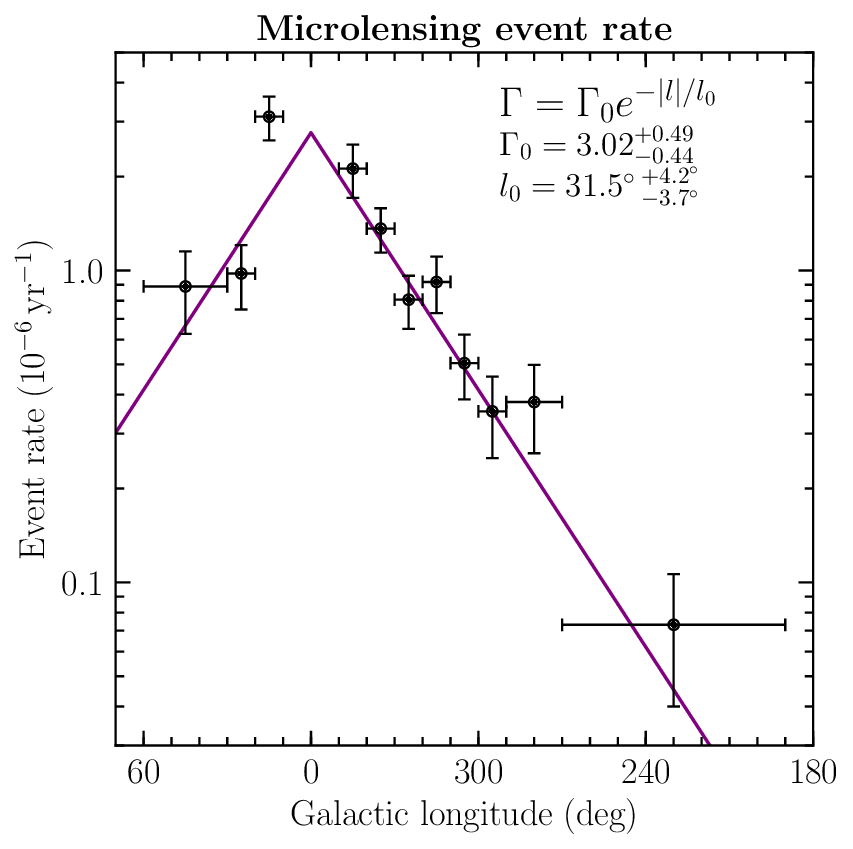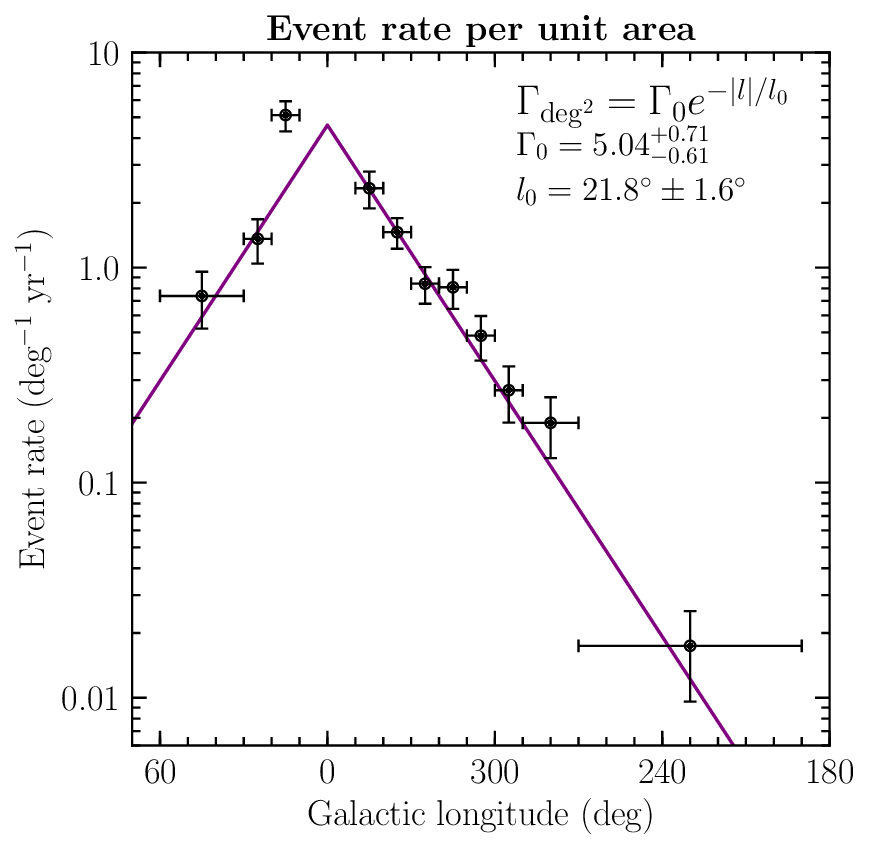Microlensing optical depth and event rate in the OGLE-IV Galactic plane fields
Searches for gravitational microlensing events are traditionally concentrated on the central regions of the Galactic bulge but it is expected that many microlensing events should occur in the Galactic plane, far from the Galactic Center. Owing to the difficulty in conducting high-cadence observations of the Galactic plane over its vast area, necessary for the detection of microlensing events, their global properties were hitherto unknown. Here, we present results of the first comprehensive search for microlensing events in the Galactic plane. We searched an area of almost 3,000 square degrees along the Galactic plane (|b|<7°, 0°<l<50°, 190°<l<360°) observed by the Optical Gravitational Lensing Experiment (OGLE) during 2013-2019 and detected 630 events.

Fields of the OGLE Galaxy Variability Survey. Filled circles and empty triangles mark the detected microlensing events.

Surface density of source stars brighter than I=21 mag in OGLE fields.
We demonstrate that the mean Einstein timescales of Galactic plane microlensing events are on average three times longer than those of Galactic bulge events, with little dependence on the Galactic longitude.

Galactic plane microlensing events (thick black line) are on average three times longer than those in the Galactic bulge (thin gray line).
We also measure the microlensing optical depth and event rate as a function of Galactic longitude and demonstrate that they exponentially decrease with the angular distance from the Galactic Center (with the characteristic angular scale length of 32°). The average optical depth decreases from 0.5×10-6 at l=10° to 1.5×10-8 in the Galactic anticenter. We also find that the optical depth in the longitude range 240°<l<330° is asymmetric about the Galactic equator, which we interpret as a possible signature of the Galactic warp.



Microlensing optical depth, event rate, and event rate per unit area as a function of Galactic longitude.
The data tables and light curves of analyzed microlensing events are available to the astronomical community from the OGLE Internet Archive.
Please cite the following paper when using the data or referring to these OGLE results: Mróz et al. 2020, arXiv:2004.07289.
 back
back